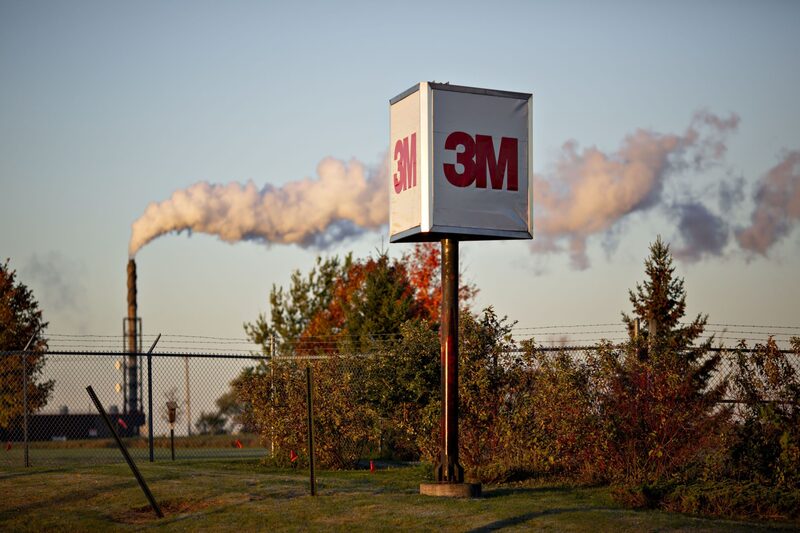Bloomberg — One frequent criticism of conglomerates is that their complex structures can make it more difficult to get proper credit from investors for all of their good assets and growth opportunities. But the axiom can also work in the reverse, apparently. 3M Co. (MMM) has so many problems at the moment — a potentially mammoth liability tied to legacy manufacturing of per- and polyfluoroalkyl substances (PFAS), lackluster growth, a long string of earnings disappointments and growing questions about the returns on its investments — that investors and analysts haven’t paid all that much attention to a burgeoning legal battle over earplugs sold to the U.S. military. That is starting to change.
First, some background: 3M acquired a manufacturer of certain dual-ended earplugs — Aearo Technologies — in 2008 and continued to sell that product until it was discontinued in 2015. The sales pitch for the earplugs was that one end would block out as much sound as possible while the other protected the user’s ears from particularly loud noises, like explosions, and still allowed them to have situational awareness and conversations with nearby counterparts — a feature that had obvious appeal to the military. Veterans have sued 3M, however, contending the company knowingly sold defective earplugs, leaving the soldiers with hearing loss and tinnitus. 3M says the earplugs were safe and effective. It hasn’t tried to estimate its potential obligations from the lawsuits because it doesn’t believe any liability is probable or reasonably estimable.

Late last month, a federal jury awarded a combined $110 million in compensatory and punitive damages to two U.S. army veterans. This was the largest award to date among a group of bellwether trials. Of the other 10 cases that have been decided, 3M and the plaintiffs have won five each. The average payout for each successful plaintiff is now around $17 million, JPMorgan Chase & Co. analyst Steve Tusa calculated in a late January report. That’s not an insignificant amount, especially considering there are about 300,000 plaintiffs in total between the active and administrative dockets. That makes the earplug complaints the largest multidistrict litigation in history — even bigger than asbestos, Tusa noted. The facts of each case vary, and the details are important. Hearing loss isn’t limited to users of allegedly faulty earplugs, but at least conceptually, it seems easier for the average juror to grasp a theoretical link between the two than, say, PFAS exposure and cancer, which can be caused by many more things.
In its annual regulatory filing last week, 3M pointed out that the vast majority of the claims sit on the placeholder administrative docket and says these are unverified. An unknown portion may be dismissed as cases are transferred to the much smaller active docket, a process that is accelerating. To that end, the above tally of victories and losses doesn’t include “several” bellwether cases that the plaintiffs’ counsel dismissed either during discovery or after being set for trial, 3M says. Essentially, the company’s success rate in the earplug litigation is higher than it seems at a glance. 3M also plans to appeal the verdicts it has lost, and a lot can change in that process.
But even taking a much more conservative view of future awards, and counting only the currently active cases, Tusa estimated implied total liabilities of about $1 billion. Assuming a $17 million average payout and a 30% victory rate for all of the pending cases — “the most onerous simple math” — the potential loss for 3M could approach a mind-boggling $1.5 trillion, he wrote. There’s no way the eventual bill is that big; the company’s market value is only about $90 billion. But the point is that this has the potential to be a huge headache and a more immediate one for 3M than PFAS, which will take years to sort out. Most analysts do not factor any kind of liability for earplugs into their estimates. Five additional bellwether cases are scheduled between March and May.
In the meantime, 3M still has to deal with all of its other problems. Investors and analysts will be looking for some semblance of a plan to get the company back on track when management presents a strategic update and 2022 outlook on Monday — its first such event since 2018. It’s unlikely 3M will share much more detail on its myriad legal woes beyond what’s already in its annual filing, although the company may have to factor earplug defense costs into its 2022 guidance. 3M will likely update the financial targets it set at that 2018 meeting after falling short on some of its goals for the 2019 to 2023 time frame. The company had aimed for 3% to 5% organic sales growth, but since 2019, it’s averaged just 1.9%, RBC analyst Deane Dray estimated. That can only be explained partially by Covid disruptions; 3M’s average growth over the past decade was 2.6%, he wrote in a report this week.Speculation about a possible breakup of 3M has accelerated in recent months because of the company’s lackluster stock returns. 3M announced a deal in December to combine its food-safety unit — a business it previously deemed a priority — with Neogen Corp. Other parts of the health-care division could also be divestiture candidates, or perhaps 3M decides it’s finally time to follow most of its industrial peers in exiting consumer-facing businesses. But a full-scale breakup remains unlikely, not least of all because 3M’s potential legal issues seem to be getting more complicated lately.
This column does not necessarily reflect the opinion of the editorial board or Bloomberg LP and its owners.
Brooke Sutherland is a Bloomberg Opinion columnist covering deals and industrial companies. She previously wrote an M&A column for Bloomberg News.

